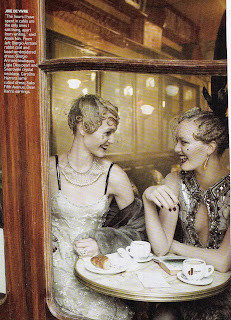
Tom Ford, please enough with the
Isherwood--for your next trick make a film of the life of printmaker, sportsman, U. of Georgia
aggie and politico Emilio Pucci. Born to a noble family in Florence in 1914, he maneuvered from a role abetting the Mussolini family in WWII to seeing his own Apollo mission logo land on the moon.
Jackie O loved him. Marilyn Monroe loved him so much she is wearing him
now (
maybe). This is a big life, even for an Italian fashion designer, people not generally known for doing it small.
Pucci is best known, of course, for his brilliantly hued biomorphic prints, which, when applied to the slinky stretchiness of silk jersey knit, came to define the pack-and-go lifestyle of the late-sixties jetsetters.
This week I'd like to follow the trail of the great printmakers who catered to this particular tribe. Pucci, was, of course, the first and foremost. The impact of his signature style was so distinctive it remains instantly recognizable today under current head-of-house
Peter Dundas, and is still as covetable on the streets of Ibiza and Southhampton as it was in the marchese's heyday.

Pucci's genius, I think, lies in his ability to lay down a multitude of not-necessarily agreeable colors in a pattern so jumped-up and lively that all arguments are off and they simply must get along. Nature can manage this nicely (above); it's harder for humans, as the heaps of bad vintage psychedelic prints for sale online make clear. It's a testament to Pucci's eye that he accomplished it routinely, and what's more he created a template for others to follow.

These
sunglasses, currently for sale on eBay, seem a brilliant way to wear Pucci if you personally are not boarding a Cessna for a fresh island every weekend. High-quality vintage dresses will cost a fortune, but accessories (and his uniforms for Braniff, described
here), offer a more affordable option.
More on the great 60s printmakers on through the week.















